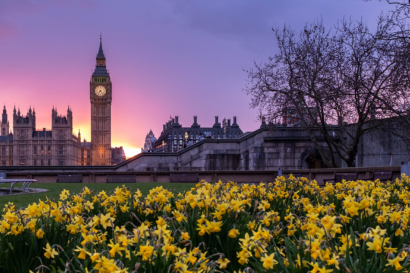AG INSIGHT | 12/10/2020
The Environment Bill is urgently needed to set direction of travel

Signe Norberg, Public Affairs Manager at the Aldersgate Group, calls for the Environment Bill to urgently return to Parliament, in order to ensure there is an effective governance structure in place for when the UK leaves the EU.
It has now been over 200 days since the Environment Bill was last in Parliament, and there is still not a date set for when it is expected to return. The Bill needs to urgently return in order to ensure that we have an effective governance structure in place for when the UK leaves the EU. Without it, there will effectively be a governance gap until the Bill receives Royal Assent and the Office for Environmental Protection (OEP) is set up.
The Government has been quite clear about its ambition for the Bill – that it is going to deliver “the most ambitious environmental programme of any country on earth”, something which has become more salient as the country looks to recover in a resilient and inclusive way after COVID-19. The Environment Bill provides key building blocks for the new environmental governance system, such as setting long-term targets in priority areas which the government is legally required to meet; defining environmental principles in future policy making; and establishing the OEP as an independent watchdog. It also establishes key mechanisms that will enable greater resource efficiency and improvement to the natural and marine environment.
Having the Bill in place is also important because it can support the development of other policies, such as the Planning White Paper, and ensure that policies and ambitions operate smoothly together – as part of a coherent whole. Indeed, a recent blog on the Aldersgate Group website illustrate the importance of ensuring that environmental goals align coherently with economic planning as the country recovers.
Whilst the Environment Bill itself has stalled, there has been some welcome developments in one important area – long-term targets. In August, the Department for Environment, Food and Rural Affairs published their environmental targets policy paper, which set out the scope for the forthcoming long-term targets. This has been an important step forward in establishing legally binding long-term targets, and setting robust, transparent, and ambitious long-term targets will be vital to ensure an environmental governance framework that protects and enhances the natural environment.
From a business perspective, it is important that the targets provide much needed clarity on long-term policy direction and a stable investment environment. Clear targets establish a framework for government policies, subsidies and regulations within which businesses can receive predictable revenues from investing in more resource efficient and environmentally restorative business models. Ambitious targets can also create a regime whereby businesses are incentivised to go above and beyond minimal compliance baselines.
As a consequence, it is crucial that the long-term targets are:
1. Clear in scope, which the environmental targets policy paper and subsequent public engagement will help support. Further, regular stakeholder engagement throughout the target setting process will be important to aid this objective.
2. Interdependent, recognising that many of the priority areas set out in the Bill will affect one another. Targets that are set will need to interact well with one another to achieve holistic improvements, and there may be several targets per area. A good example of this being vital can be noted with the water and biodiversity targets, where improvements in one will drive progress in the other.
3. Supported by strong interim targets that give businesses confidence regarding near-term delivery. Interim targets should ideally be legally binding to make them sufficiently robust. However, if that is not possible, there needs to be clear requirements for Government to report on progress against interim targets and to set out what additional measures will be taken if we appear off-track to meet them. This will help ensure that they are sufficiently robust.
4. Underpinned by an effective framework. To have an effective framework, there should be a stronger link between the targets and the Environmental Improvement Plans (EIPs). The EIPs – and the annual reporting process supporting the EIPs – must contain clear policy measures, investments and initiatives that will help ensure progress on both long-term and interim targets. It would also be necessary to have further transparency over which experts will be consulted as part of the next phase of the target setting process. Finally, additional information is needed on what the Significant Improvement Test will entail, how long-term targets will be objectively assessed against this test, what interim targets will help drive long-term progress, and how the Government intends to deal with current targets that are due to expire between now and when the first set of targets must be set.
5. Consistent with other policy areas. Targets will be most effective when they are integrated across multiple policy areas. The impetus to deliver on these targets need to be spread across the economy and incorporated into all departments’ work, as mentioned above.
If you want further information on Aldersgate Group’s perspective on the long-term targets’ scope, you can find a paper on this here.
To support this development, the Government should press ahead and bring back the Environment Bill so crucial discussions around our future environmental governance regime can continue. Otherwise, we run the risk of realising the concerns around a governance gap, and we may miss the opportunity to use the Environment Bill to integrate environmental improvements into the economic recovery from COVID-19.
Signe Norberg is Public Affairs Manager at the Aldersgate Group



